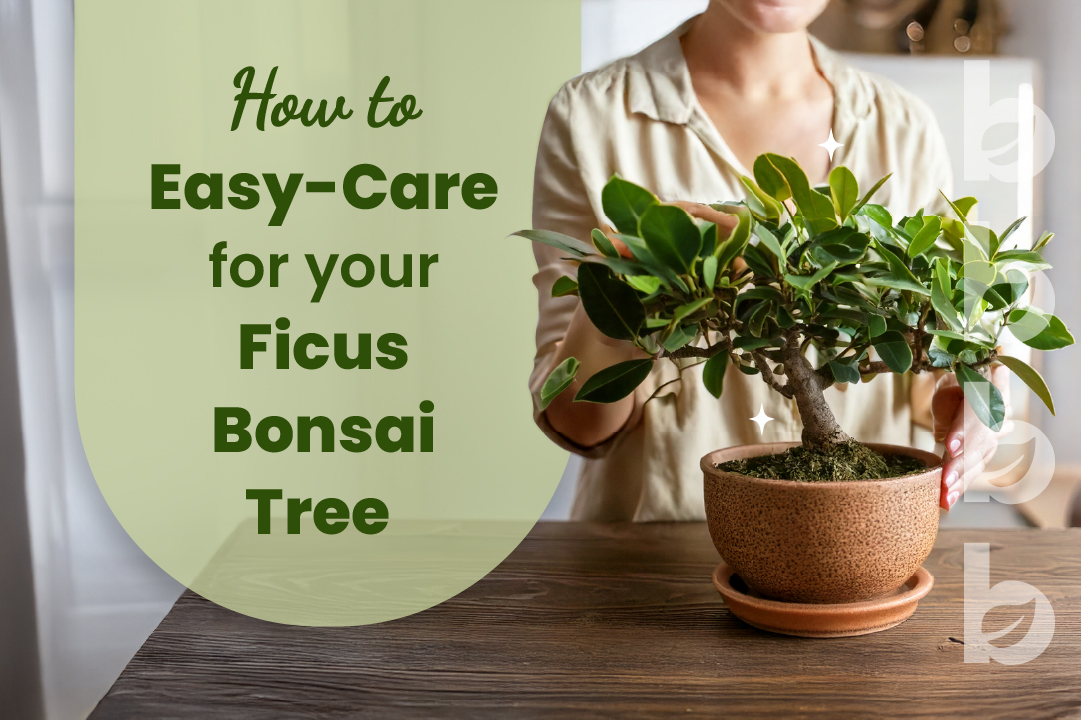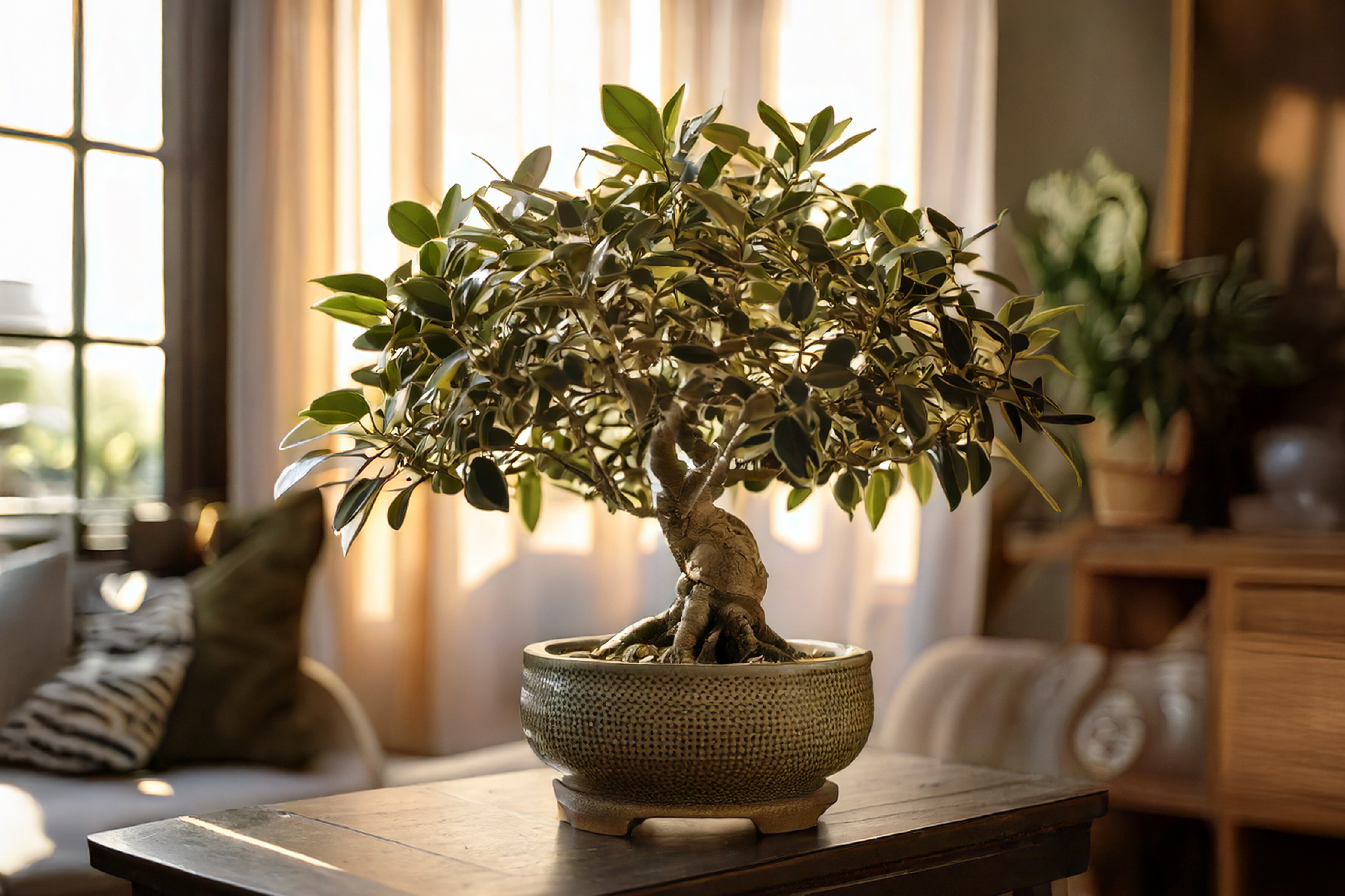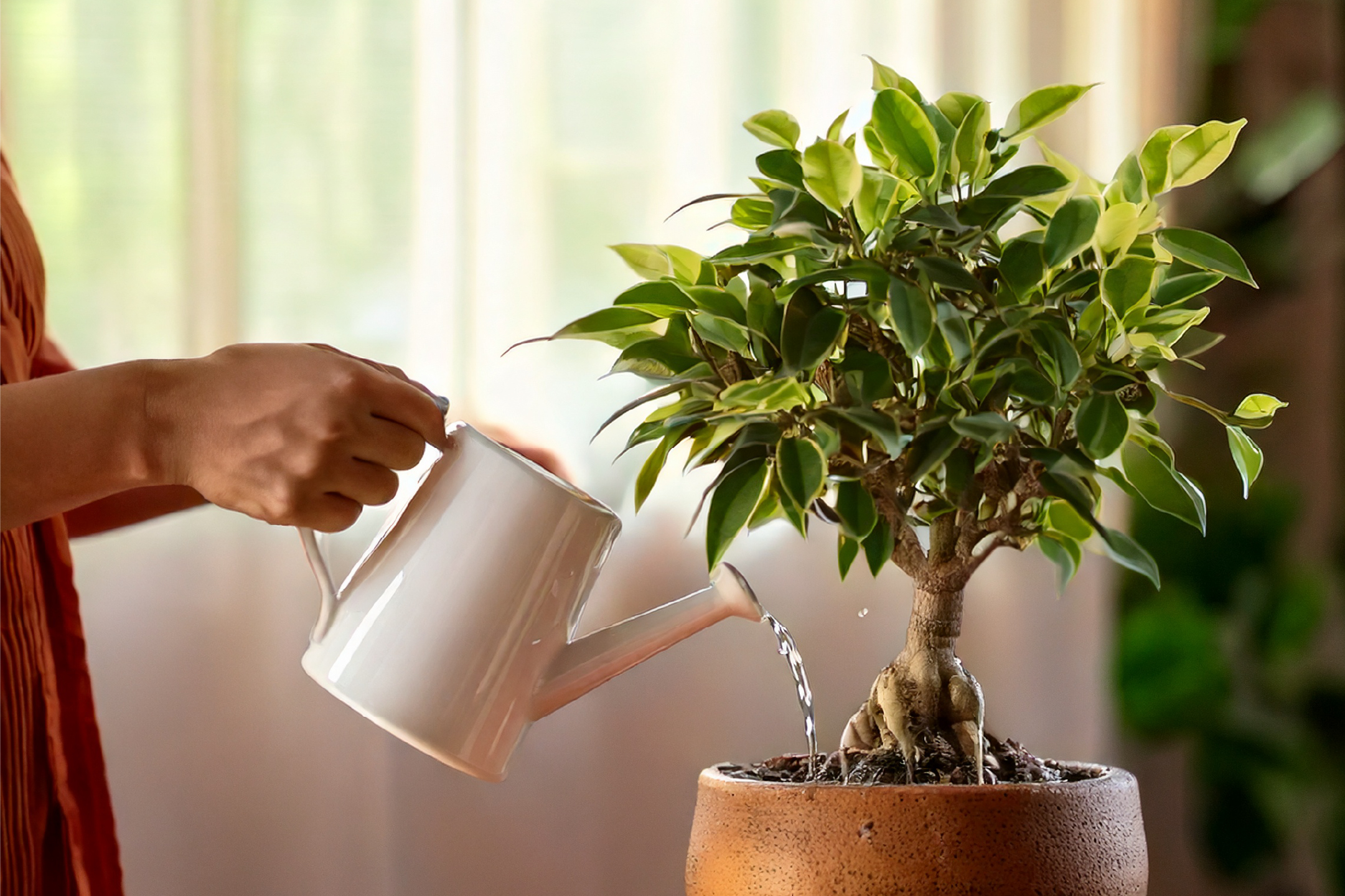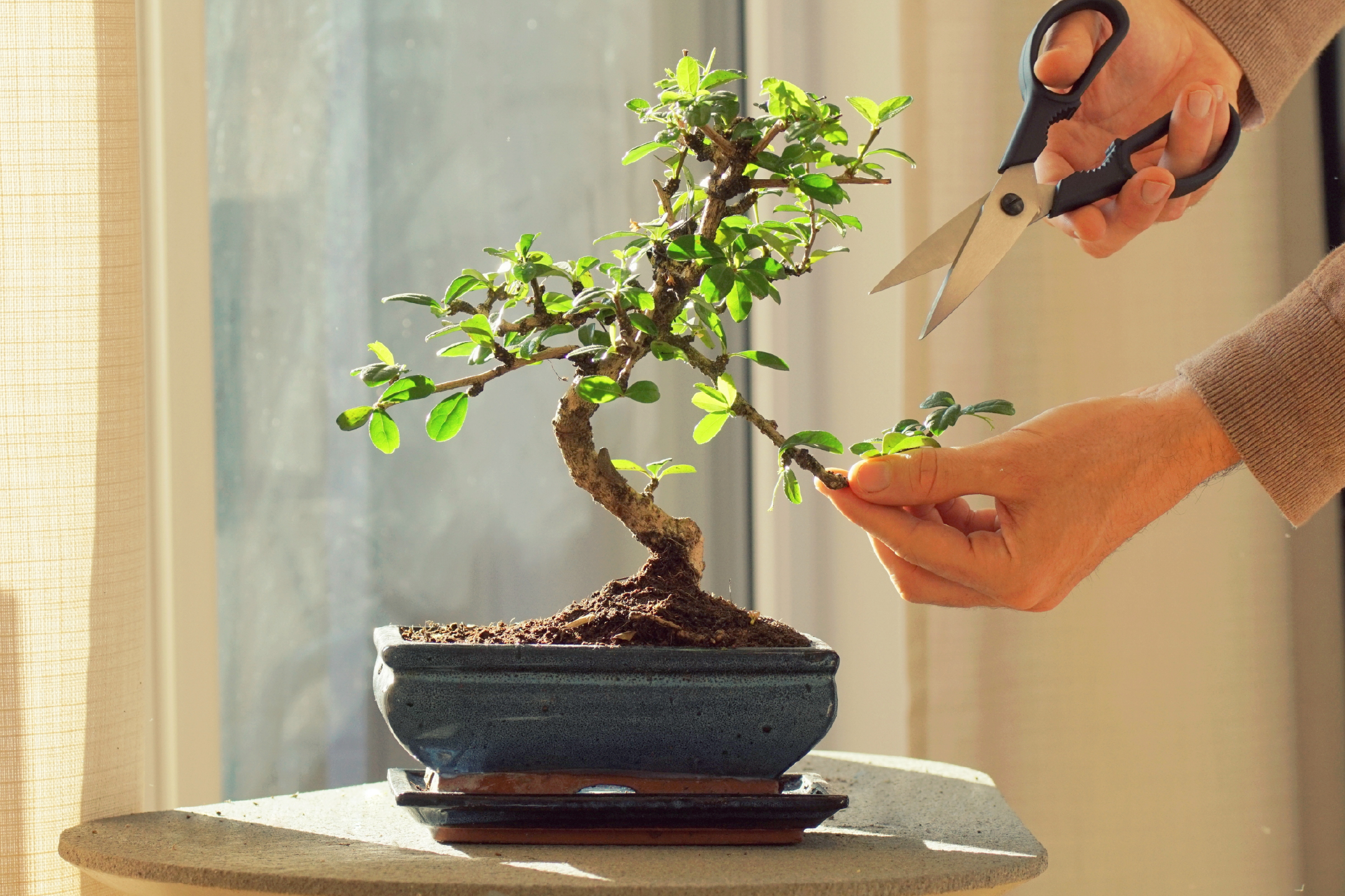
Introduction
A Ficus Bonsai tree plant is more than just a decorative plant—it's a living piece of art that brings nature’s charm into your home or office. As one of the most easy-care indoor plants, a Ficus Bonsai is perfect for beginners and experienced plant lovers alike. Whether you're looking for a plant to purify the air, reduce stress, or simply enhance your space, this miniature tree is a great choice. In this guide, we’ll cover everything you need to know to keep your Ficus Bonsai healthy and flourishing.
Why Choose a Ficus Bonsai?
The Ficus Bonsai tree is one of the most popular indoor bonsai trees due to its:
- Hardiness – Adaptable to various environments
- Low Maintenance – Requires minimal watering and care
- Air-Purifying Qualities – Removes toxins from indoor air
- Compact Size – Fits easily on desks, shelves, or tabletops
- Aesthetic Appeal – Adds a sophisticated, natural touch to any space

How to Care for Your Ficus Bonsai Tree
1. Light Requirements
- Bright, Indirect Light: The Ficus Bonsai thrives best in bright, indirect sunlight. Place it near a window with filtered light, ensuring it gets at least 4-6 hours of light daily.
- Avoid Direct Sunlight: Too much direct sun can scorch the leaves, while too little light can cause leaf drop.
Bonus Tip: If you’re keeping your bonsai in a dimly lit space, consider using a grow light to supplement natural sunlight.
2. Watering Your Ficus Bonsai Tree
- Consistent, But Not Excessive Watering - A Ficus Bonsai prefers slightly moist soil but dislikes overwatering.
- Water when the top inch of soil feels dry.
- Use room-temperature water to avoid shocking the roots.
- Ensure proper drainage to prevent root rot.
Avoid Overwatering: Yellowing leaves or soggy soil indicates too much water.

Bonus Tip: Misting the leaves occasionally helps maintain humidity, especially in dry indoor conditions.
3. Temperature & Humidity
- Ideal Temperature: The Ficus Bonsai tree thrives in temperatures between 15-30°C (59-86°F). Keep it away from cold drafts, heaters, or air conditioners.
- Humidity Matters: A moderate to high humidity level helps keep the plant healthy.
- Place a humidity tray filled with water beneath the pot.
- Mist the leaves lightly every few days.
- Keep it near other indoor plants to create a humid microclimate.
4. Pruning & Shaping Your Ficus Bonsai Tree
- Regular pruning of Bonsai keeps it beautiful.
- Trim excess growth every 2-3 months to maintain shape.
- Remove dead or yellow leaves to encourage new growth.
- Use sharp bonsai scissors for precise cuts.

Bonus Tip: If you want to style your bonsai, use bonsai wiring techniques to train its branches.
5. Fertilizing for Healthy Growth
- Providing the necessary nutrients to your Bonsai tree is very crucial for strong growth.
- Use a balanced liquid fertilizer once every 2-4 weeks during the growing season (spring & summer).
- Reduce fertilizing in winter, as the plant enters a slow growth phase.
Bonus Tip: Opt for organic fertilizers to keep the soil healthy and nutrient-rich.
6. Repotting Your Ficus Bonsai
- Repot Every 2-3 Years: Repotting prevents root binding and keeps the plant healthy.
- Choose a slightly larger bonsai pot with good drainage.
- Use well-draining bonsai soil mix for best results.
- Trim excess roots carefully before placing them in fresh soil.
- Avoid repotting in winter—spring is the best time for repotting.
DeHaat Bageecha’s Ficus Bonsai: The Best Choice for Your Home
Looking for a premium-quality Ficus Bonsai? DeHaat Bageecha offers carefully nurtured Ficus Bonsai plants that are perfect for beginners and plant lovers.
Why Choose DeHaat Bageecha’s Ficus Bonsai?
- Healthy, Pest-Free Plants – Grown with expert care
- Perfectly Sized for Indoors – Ideal for tables, desks, and shelves
- Low-Maintenance & Beginner-Friendly
- Secure Payments & Quick Delivery
Visit DeHaat Bageecha’s website and get your Ficus Bonsai today into your home!
Common Ficus Bonsai Problems & Solutions
Leaf Drop
- Cause: Sudden environmental changes (temperature, light, or humidity)
- Solution: Keep conditions stable & avoid relocating frequently.
Yellowing Leaves
- Cause: Overwatering or nutrient deficiency
- Solution: Check soil moisture & adjust the watering schedule.
Pests (Aphids, Spider Mites)
- Cause: Dry conditions or weak plant health
- Solution: Use organic insecticidal spray or neem oil to keep pests away.
Conclusion
Caring for a Ficus Bonsai is easy when you follow the right steps! With proper light, watering, pruning, and humidity, your bonsai will thrive for years. If you're looking for a healthy and beginner-friendly bonsai, don’t forget to check out DeHaat Bageecha’s Ficus Bonsai and bring home this elegant, air-purifying plant today!
FAQs About Ficus Bonsai
1. Is Ficus Bonsai good for beginners?
Yes! The Ficus Bonsai is one of the easiest bonsai trees to care for, making it perfect for beginners. It is highly adaptable, resilient, and requires minimal maintenance compared to other indoor bonsai trees. Whether you are just starting out or looking for a low-maintenance plant, the Ficus Bonsai is an excellent choice.
2. How often should I water my Ficus Bonsai?
Water your Ficus Bonsai when the top inch of soil feels dry—this is usually once every 3-5 days, depending on humidity levels. Avoid overwatering, as too much moisture can lead to root rot. If your home has low humidity, misting the leaves occasionally will help maintain optimal moisture levels for healthy growth.
3. Can I keep my Ficus Bonsai indoors?
Yes! The Ficus Bonsai thrives indoors as long as it receives bright, indirect light. Placing it near a window with filtered sunlight is ideal. If you're growing it as an indoor bonsai tree, ensure proper humidity and air circulation to keep it healthy.
4. How do I shape my Ficus Bonsai?
Regular pruning is key to maintaining the shape of your Ficus Bonsai. Trim any overgrown branches to encourage a well-balanced structure. You can also use bonsai wires to gently train the branches into your desired shape, making it a beautiful addition to your home decor.
5. When should I repot my Ficus Bonsai?
Repot your Ficus Bonsai every 2-3 years to promote healthy root growth. The best time to repot is early spring, just before the growing season begins. Use well-draining soil to ensure your plant remains strong and vibrant.



